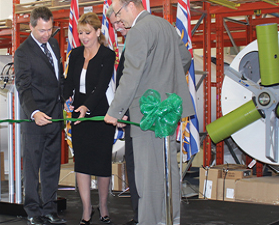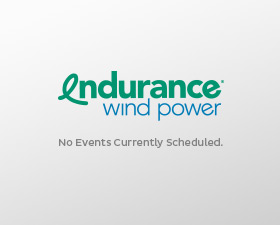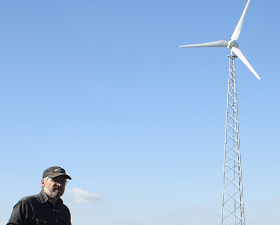
Learn About the Wind Industry
 Farm Wind vs. Wind Farms
Farm Wind vs. Wind Farms
Endurance Wind Power manufactures wind turbines for distributed wind applications.
What does “distributed wind” mean? This is when energy is produced where it is consumed, without the need for it to be transmitted long distances. Farming is one of the most common businesses of our customers. These customers harvest wind on their site, not only do they farm crops and livestock, they also farm the wind.
The term wind farm, however, is synonymous with utility scale wind turbines. Turbines that are much larger in size, and require energy to be transmitted from long distances to where it will eventually be consumed.
Learn More
 Benefits to the Environment
Clean and renewable energy generation is a priority for the long-haul sustainability of our planet.
A wind turbine’s production offsets CO2 emissions.
Making a difference with wind power. Once the local community of businesses and residential land owners see the first turbine go up, they often follow. This creates a substantial positive effect on the community and the environment at large.
Benefits to the Environment
Clean and renewable energy generation is a priority for the long-haul sustainability of our planet.
A wind turbine’s production offsets CO2 emissions.
Making a difference with wind power. Once the local community of businesses and residential land owners see the first turbine go up, they often follow. This creates a substantial positive effect on the community and the environment at large.
Learn More
 Power of the Wind
Power of the Wind
Measuring Electrical Production
The most valuable measure of a wind turbine is the amount of electricity in kWh (kilowatt hours) the turbine produces over the course of a year in a specific wind resource. If you multiply kWh/per year produced by your wind turbine by your local electricity costs per kWh, you will know how much money you are saving per year by purchasing a wind turbine. Many governments offer incentive programs for renewables that positively affect the return on investment. To learn more click here.
Converting Wind to Electricity
The amount of electricity (kWh) a wind turbine generates in a year is commonly called AEP (annual energy production) and is based on many important factors:
Wind Power: This is the amount of power in the wind available for a turbine to capture and convert to electricity. The major factors in wind power are speed of wind at a specified height, density and air temperature, and turbulence.
Rotor Size: Measured in square feet or square meters, the swept area is a function of the blade diameter of the wind turbine and determines how much wind power can be converted to electricity by your turbine.
Learn more about how a wind turbine is made
Learn how to build a wind turbine
 Wind Power History
Wind Power History
Timeline
The first wind turbines date back to the 1800’s and were used primarily for irrigation and milling, according to the US Department of Energy website.
Off grid wind power electricity production did not start until the 1920’s, and in the 1980’s the first large scale wind farms were launched.
Today
Denmark boasts one of the largest proportions of wind power production - 20% of energy production comes from wind power.
Many European countries produce more than 10% of their electricity from wind power.
The US Department Of Energy goal is for wind power to comprise 6% of electricity generated in the US and 20% by 2030.
Learn More
Source: Data taken from U.S Department of Energy History Page

 Farm Wind vs. Wind Farms
Farm Wind vs. Wind Farms
 Benefits to the Environment
Benefits to the Environment
 Power of the Wind
Power of the Wind
 Wind Power History
Wind Power History






